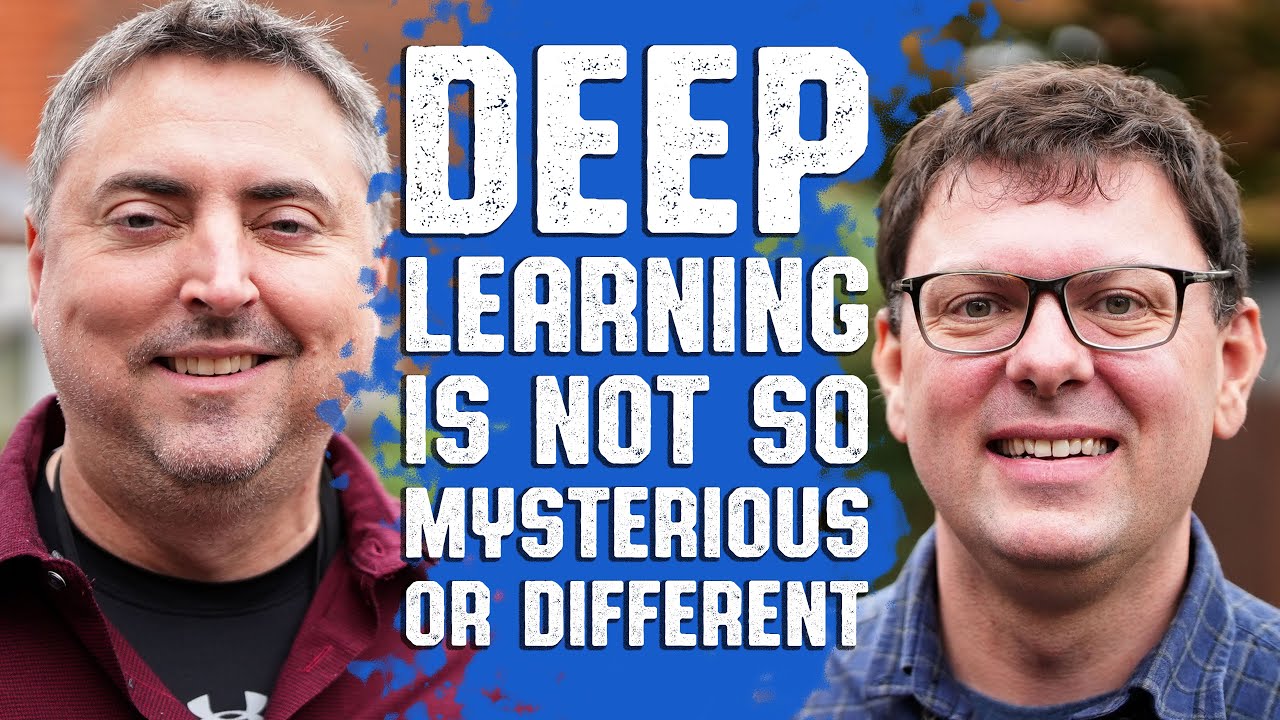Professor Andrew Wilson explains that deep learning’s effectiveness stems from its ability to balance maximal model expressiveness with soft simplicity biases, enabling large models to generalize well without overfitting by leveraging concepts like flat loss landscapes and Bayesian marginalization. He emphasizes moving beyond hard-coded priors towards principled, flexible inductive biases and deeper theoretical insights to advance AI towards genuine understanding and improved scalability.
In this insightful discussion, Professor Andrew Wilson demystifies deep learning by emphasizing that while it is indeed both mysterious and different, many of its perceived mysteries can be understood through the lens of soft inductive biases and rigorous generalization frameworks that have existed for decades. He highlights deep learning’s universality and its exceptional ability to learn representations effectively. Contrary to common beliefs, Wilson argues that larger models do not necessarily overfit more; instead, they often exhibit a stronger bias towards simpler solutions, a phenomenon linked to concepts like double descent and benign overfitting. This challenges the traditional bias-variance trade-off, suggesting that expressiveness and simplicity bias can coexist, enabling models to generalize well even with vast parameter counts.
Wilson stresses the importance of honestly representing our beliefs in model construction, advocating for maximally flexible models combined with soft regularization or simplicity biases. He explains that while hard constraints based on known symmetries or conservation laws can be useful, soft biases often suffice, allowing models to collapse onto these constraints if supported by data. This approach aligns with Bayesian principles, where marginalization over parameters naturally incorporates Occam’s razor, favoring simpler explanations without excluding more complex possibilities outright. He also discusses the role of Bayesian marginalization in representing epistemic uncertainty, which is crucial for actionable predictions in real-world applications.
The conversation delves into the geometric and theoretical underpinnings of deep learning, including the concept of flatness in loss landscapes and mode connectivity, which reveal that solutions found by training neural networks are often connected through flat regions in parameter space. Wilson notes that as models scale, these flat regions dominate, contributing to better generalization. He also touches on phenomena like grokking, where extended training leads to a reorganization of representations into simpler, more generalizable forms, and how stochastic weight averaging can help find flatter, more compressible solutions. These insights suggest that the optimization dynamics and landscape geometry play a significant role in the implicit simplicity bias observed in large models.
Wilson addresses the debate around incorporating explicit complexity penalties, such as Kolmogorov complexity, into training objectives. While neural networks seem to implicitly favor simpler, more compressible solutions, operationalizing such complexity measures as regularizers remains challenging. He also discusses the limitations of current models, such as large language models (LLMs), which, despite impressive capabilities, lack true intelligence and struggle with tasks requiring algorithmic reasoning or out-of-distribution generalization. Wilson advocates for continued research into building models that can discover new scientific theories and exhibit more universal inductive biases, moving beyond mere pattern recognition towards genuine understanding.
Finally, Wilson reflects on the broader implications of his work for the future of AI and machine learning. He critiques the overemphasis on feature engineering and hard-coded priors, supporting instead the “bitter lesson” that scaling and computation often outperform handcrafted solutions over time. However, he cautions that learning inherently requires assumptions, and understanding which assumptions to make is key to progress. He envisions a future where models combine maximal expressiveness with principled simplicity biases, potentially through structured layers and novel architectures that improve computational efficiency and scaling behavior. Ultimately, Wilson sees the path forward as one that balances flexibility, principled inductive biases, and a deeper theoretical understanding to unlock AI’s full potential.
